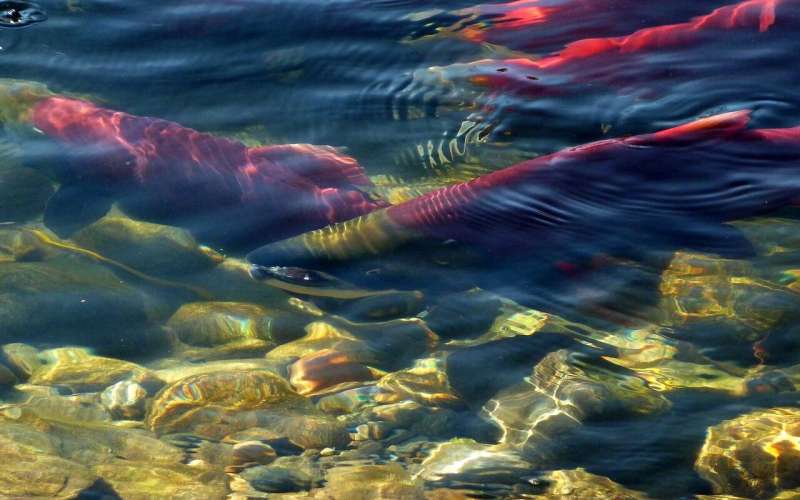Credit: CC0 Public Domain
A team of researchers from Sweden, the U.K and the U.S., has found that release of hatchery-reared smolts in Sweden has led to a reduction in diversity in Baltic salmon. In their paper published in Proceedings of the Royal Society B, the group describes their genetic study of Atlantic salmon that live in the Baltic Sea and spawn in Swedish rivers, and what they learned about them.
Back in the 1960s, the researchers note, dams were built on many rivers in Sweden, preventing Atlantic salmon from spawning. In response, hatchery operations were built to boost salmon numbers.
Prior research has shown that when hatchery operations are conducted, those running the facilities tend to choose a certain kind of fish—they prefer those that grow fast. This tends to limit diversity. Prior research has also shown that fish that are released from hatchery operations have few survival skills. If the released fish mate with wild fish, the offspring tend to be less able to fend for themselves as they grow and populations become less diverse. The researchers with this new effort noted that the hatchery operations have been running for over a half-century, which made them wonder if such operations may have been impacting diversity of the salmon population in Sweden. In searching the literature, they found that nobody had bothered to find out what sort of impact hatchery releasing might be having on the salmon. That finding led them to conduct their own study. Their effort involved obtaining salmon scale samples captured by a host of other entities (mainly fishermen) going back approximately 100 years. They then conducted a genetic study of the scales by screening 82 SNPs from 1,680 samples which were known to come from 13 rivers in Sweden.
The researchers found that the salmon were much less genetically diverse in modern times than they had been before hatchery releasing was introduced. This finding, they note suggests that the operations may have been conducted in vain—by adding inferior fish into the mix, hatcheries may have been inadvertently reducing fish populations.
More information: Johan Östergren et al. A century of genetic homogenization in Baltic salmon—evidence from archival DNA, Proceedings of the Royal Society B: Biological Sciences (2021). DOI: 10.1098/rspb.2020.3147
Journal information: Proceedings of the Royal Society B
© 2021 Science X Network
























